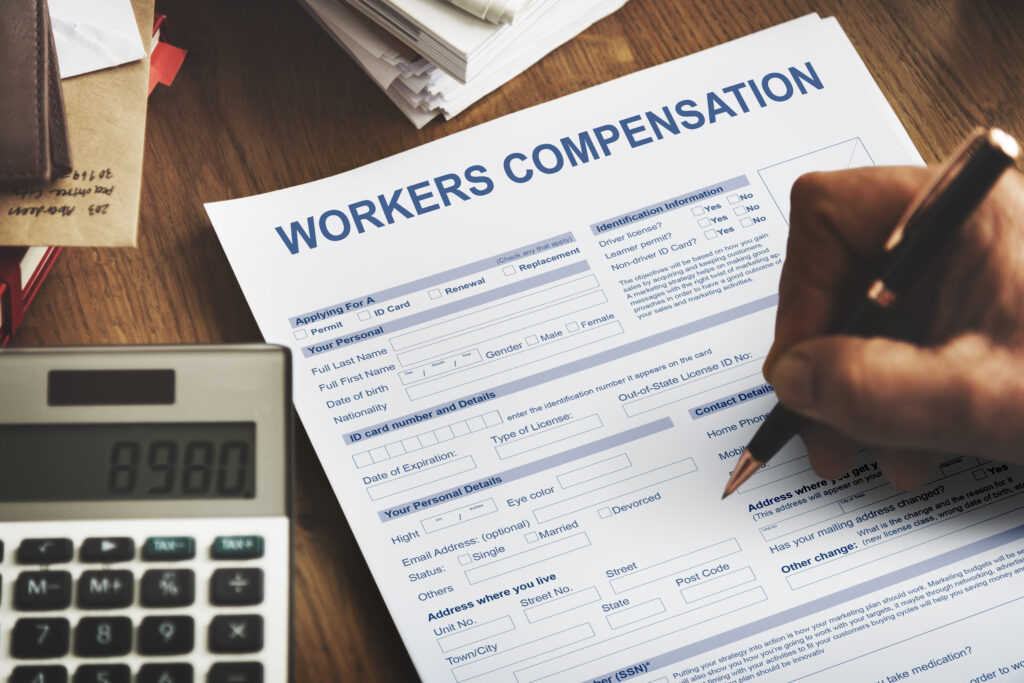Lifting injuries are unfortunately all too common in the workplace, especially when individuals try to lift or carry too much. Workplace lifting injuries can result in strains, broken bones, and other serious medical complications.
Suppose you suffered a lifting injury while on the job. You may be eligible to pursue a workers' compensation claim for various benefits. In addition, you can file a third-party claim or lawsuit against an at-fault party for negligence.
An experienced St. Louis workers’ compensation lawyers in your area can review your legal options with you and pursue the compensation you deserve.
Various Types of Workplace Lifting Injuries and Required Medical Treatment

Workplace lifting injuries can be debilitating and often require specialized medical treatment to ensure proper recovery. These injuries vary in severity and can affect different parts of the body. One common type of lifting injury is a strain or sprain, which occurs when muscles or ligaments are stretched or torn due to lifting heavy objects incorrectly or using poor lifting techniques.
Symptoms of strains and sprains include pain, swelling, and limited range of motion. Treatment for these injuries typically involves rest, ice, compression, and elevation (RICE), along with pain medication and physical therapy to help strengthen the affected muscles and prevent further injury.
Another type of workplace lifting injury is a herniated disc, which occurs when the soft cushion between the vertebrae in the spine ruptures or bulges out of place. This can happen when lifting heavy objects with improper form, putting excessive pressure on the spine. Symptoms of a herniated disc include pain, numbness, tingling, and weakness in the affected area. Treatment options range from conservative measures such as rest, pain medication, and physical therapy to more invasive interventions like epidural steroid injections or surgery, depending on the severity of the injury.
Lifting heavy objects can also lead to fractures or broken bones, especially in the hands, wrists, arms, or feet. Fractures may occur due to sudden impacts or crushing injuries while lifting, causing severe pain, swelling, and difficulty moving the affected limb. Treatment for fractures typically involves immobilization with a splint or cast, pain management, and sometimes surgery to realign the broken bones and promote healing.
In addition to acute injuries, repetitive lifting tasks can lead to overuse injuries such as tendinitis or bursitis. Tendinitis occurs when the tendons become inflamed from repetitive stress, causing pain, swelling, and stiffness in the affected area. Bursitis, on the other hand, is inflammation of the fluid-filled sacs that cushion the joints, resulting in pain and limited mobility. Treatment for these conditions usually involves rest, activity modification, anti-inflammatory medication, and physical therapy to reduce inflammation and strengthen the affected muscles and tendons.
When workplace lifting injuries occur, prompt medical treatment is essential for optimal recovery and return to work. In the meantime, an experienced workers’ compensation attorney can investigate your circumstances, review your medical records, and handle the legal components of your case – including filing a timely workers’ compensation claim.
How Do Lifting Injuries Usually Happen While on the Job?
Workplace lifting injuries can result from a variety of occurrences that place strain on the body. One common scenario is lifting objects that are too heavy or bulky for one person to handle safely. This can happen when workers are required to move large items without proper assistance or equipment, leading to overexertion and potential injury.
Another contributing factor is improper lifting techniques. When workers bend, twist, or lift with their back instead of their legs, they increase the risk of strains, sprains, and other musculoskeletal injuries. Inadequate training on proper lifting methods or failure to follow established safety protocols can also contribute to these incidents.
Environmental factors play a significant role in workplace lifting injuries as well. Cluttered workspaces, uneven surfaces, and obstacles in pathways can make it difficult for workers to maneuver safely while carrying heavy loads. In addition, poor lighting conditions or slippery floors increase the likelihood of accidents and injuries during lifting tasks.
Time pressure and production demands can also influence the likelihood of lifting injuries in the workplace. When workers feel rushed or pressured to meet deadlines, they may be more inclined to take shortcuts or bypass safety procedures, putting themselves at greater risk of injury. Furthermore, fatigue and lack of breaks can impair judgment and physical abilities, making workers more susceptible to accidents and injuries while lifting.
In some cases, inadequate ergonomic design of workstations or equipment can contribute to lifting injuries. Awkward or poorly positioned tools, machinery, or storage systems may require workers to adopt awkward postures or exert excessive force during lifting tasks, increasing the risk of injury over time.
Finally, workplace culture and attitudes toward safety can influence the occurrence of lifting injuries. A lack of emphasis on safety, complacency, or a “macho” mentality that encourages workers to push through pain or discomfort can create an environment where lifting injuries are more likely to occur.
Recoverable Workers’ Comp Benefits in a Lifting Injury Case

Workers’ compensation benefits seek to provide financial support and assistance to employees who suffer from work-related injuries, including lifting injuries. Several types of benefits may be available to eligible workers, depending on the nature and severity of their injury.
First, workers’ compensation typically covers medical expenses related to the treatment of lifting injuries. This includes doctor visits, hospital stays, surgeries, medications, physical therapy, and other necessary medical services. Workers’ compensation insurance pays for these costs directly, ensuring that injured employees receive the care they need without having to pay out of pocket.
In addition to medical benefits, workers’ compensation may also provide disability benefits to compensate workers for lost wages due to their lifting injury. There are typically two types of disability benefits available: temporary disability benefits and permanent disability benefits:
- Injured workers receive temporary disability benefits when they are temporarily unable to work while recovering from their lifting injury. These benefits typically replace a portion of the worker’s lost wages for the duration of their disability, up to a specified maximum limit or until they can return to work.
- Permanent disability benefits, on the other hand, are available to workers who suffer from permanent impairments or disabilities as a result of their lifting injury. These benefits intend to compensate workers for the long-term effect of their injury on their ability to earn a living. The amount of permanent disability benefits awarded is typically based on the severity of the impairment and its effect on the worker’s earning capacity.
In some cases, workers’ compensation may also provide vocational rehabilitation benefits to help injured workers return to the workforce. This may include job training, education, job placement assistance, and other services designed to help workers transition back into suitable employment following a lifting injury.
Finally, workers’ compensation may offer death benefits to the dependents of workers who die as a result of a lifting injury. These benefits typically include financial support to help cover funeral expenses and provide ongoing financial support to the worker’s surviving spouse, children, or other dependents.
Workers’ compensation benefits for lifting injuries seek to provide injured workers with the support they need to recover from their injuries, replace lost income, and maintain financial stability during a challenging time. An experienced workers’ compensation attorney in your area can help you understand the various types of available benefits – and how to access those benefits in a timely manner.
Filing a Third-party Claim After a Lifting Injury
After sustaining a workplace lifting injury, it is essential for the injured worker to explore all potential compensation, including the possibility of a third-party claim. While workers’ compensation provides benefits regardless of fault, a third-party claim allows the injured worker to pursue additional damages from parties other than their employer whose negligence or misconduct contributed to the injury.
Proving a third-party claim after a workplace lifting injury typically involves establishing that someone other than the employer was responsible for the injury. This can include manufacturers of defective equipment or machinery, negligent property owners, contractors or subcontractors, or other parties whose actions or omissions contributed to the injury.

One key element in proving a third-party claim is demonstrating that the third party owed a duty of care to the injured worker and that they breached that duty through their negligent actions. For example, if a worker becomes injured while using defective lifting equipment, the manufacturer of the equipment may be liable for failing to ensure its safety or providing adequate warnings about potential hazards.
Gathering evidence is crucial in proving a third-party claim. This may include eyewitness testimony, accident reports, photographs or video footage of the accident scene, medical records documenting the extent of the injury, and expert opinions from engineers or other professionals familiar with workplace safety standards.
In addition to establishing liability, it is important to quantify the damages the injured worker suffered as a result of the third party’s negligence. This may include medical expenses, lost wages, pain and suffering, disability or impairment, and future medical and rehabilitation costs.
Pursuing a third-party claim alongside a workers’ compensation claim can be complex, as the two claims may intersect and affect each other. For example, any compensation received through a third-party claim may be subject to reimbursement to the workers’ compensation carrier for benefits already paid. Therefore, it is advisable for injured workers to seek the guidance of an experienced attorney.
While pursuing a third-party claim may be challenging, it can provide additional compensation to injured workers beyond what is available through workers’ compensation benefits alone.
Potential Third-Party Damages in a Lifting Injury Case
In a personal injury claim or lawsuit related to a workplace lifting injury, the injured person can seek various types of damages from third parties whose actions contributed to the injury. These damages aim to compensate the injured workers for the losses they have suffered due to the incident.
Medical expenses are a primary category of recoverable damages. This covers all costs associated with treating the lifting injury, including doctor visits, hospital stays, surgeries, medications, physical therapy, and rehabilitation. Future medical expenses may also be included if ongoing treatment or surgeries are necessary.
Lost wages and loss of earning capacity are also recoverable damages. This includes compensation for the income the injured worker lost while unable to work due to the lifting injury. If the injury leads to a permanent impairment affecting future earnings, compensation may also cover the reduced ability to earn income.
Pain and suffering damages address the physical and emotional distress the injury caused. These damages account for the pain, discomfort, and emotional trauma the injured worker experienced. They depend on the severity of the injury and its repercussions on the worker’s life.
Furthermore, the spouse or family members of the injured worker may pursue loss of consortium damages. This compensation acknowledges the loss of companionship, support, and services the injured worker would have provided if not for the lifting injury.
In cases of extreme negligence, the injured worker may pursue punitive damages. These damages serve to punish the at-fault party and deter similar behavior in the future. However, these damages only apply in cases of gross negligence or intentional wrongdoing.
The types and amounts of recoverable damages can vary depending on the specifics of the case and the laws of the jurisdiction. Consulting with a knowledgeable personal injury attorney is advisable when it comes to pursuing the full amount of compensation deserved.
Call an Experienced Workers’ Comp Lawyer Today

Suppose you sustained a lifting injury while at work; you need to consult with an experienced workers’ comp lawyer in your area right away. Your attorney can promptly investigate the circumstances surrounding the occurrence and injury, review your medical records, and determine your legal options. Your lawyer can then file a workers’ compensation claim for benefits and/or a third-party claim for additional damages. Finally, your lawyer can represent you during all legal proceedings throughout your case and work to maximize the compensation you recover.
Best of all, your attorney can do all this for you while you focus on the most important thing: recovering from your injuries. Seek your free consultation with a trusted workers’ compensation attorney today.
